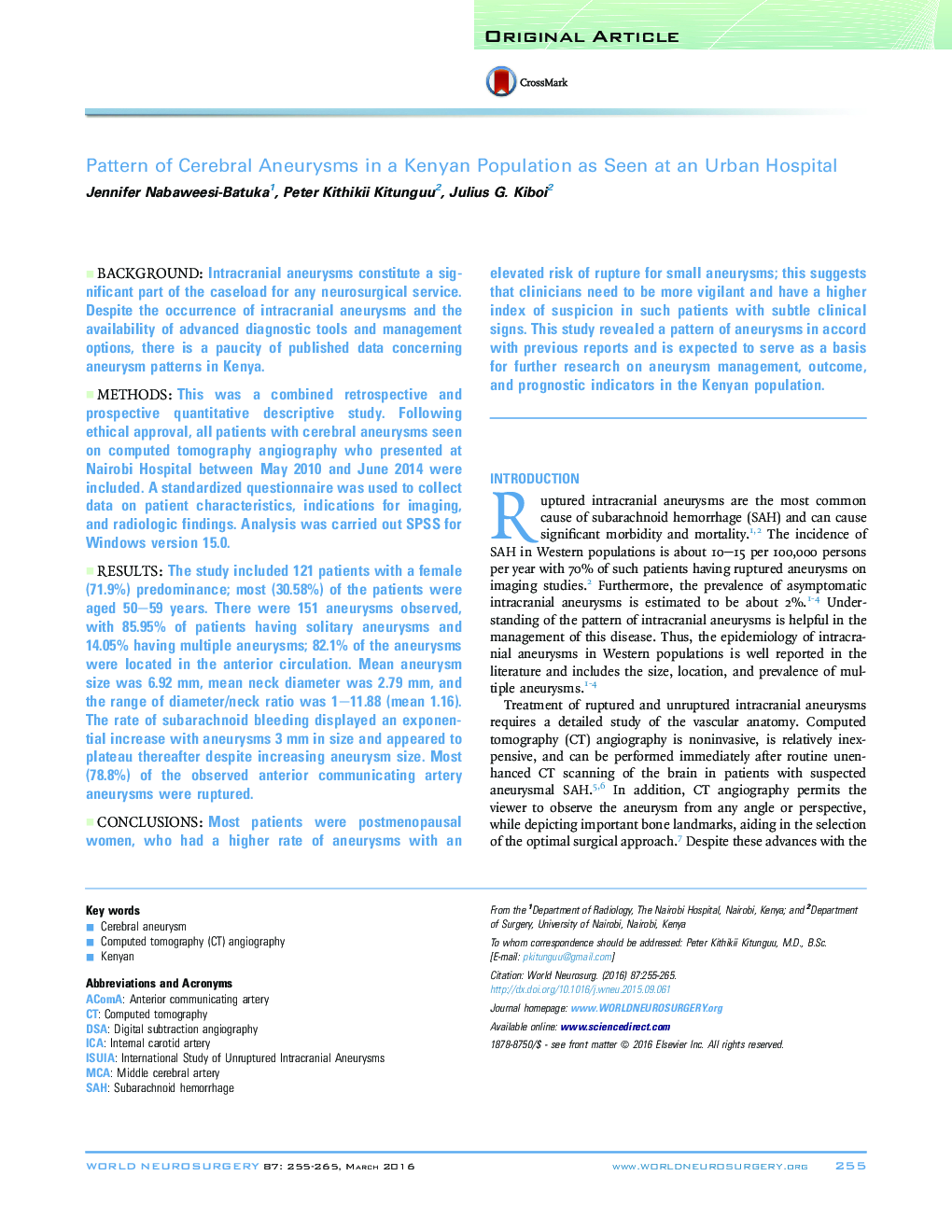| Article ID | Journal | Published Year | Pages | File Type |
|---|---|---|---|---|
| 6043972 | World Neurosurgery | 2016 | 11 Pages |
BackgroundIntracranial aneurysms constitute a significant part of the caseload for any neurosurgical service. Despite the occurrence of intracranial aneurysms and the availability of advanced diagnostic tools and management options, there is a paucity of published data concerning aneurysm patterns in Kenya.MethodsThis was a combined retrospective and prospective quantitative descriptive study. Following ethical approval, all patients with cerebral aneurysms seen on computed tomography angiography who presented at Nairobi Hospital between May 2010 and June 2014 were included. A standardized questionnaire was used to collect data on patient characteristics, indications for imaging, and radiologic findings. Analysis was carried out SPSS for Windows version 15.0.ResultsThe study included 121 patients with a female (71.9%) predominance; most (30.58%) of the patients were aged 50-59 years. There were 151 aneurysms observed, with 85.95% of patients having solitary aneurysms and 14.05% having multiple aneurysms; 82.1% of the aneurysms were located in the anterior circulation. Mean aneurysm size was 6.92 mm, mean neck diameter was 2.79 mm, and the range of diameter/neck ratio was 1-11.88 (mean 1.16). The rate of subarachnoid bleeding displayed an exponential increase with aneurysms 3 mm in size and appeared to plateau thereafter despite increasing aneurysm size. Most (78.8%) of the observed anterior communicating artery aneurysms were ruptured.ConclusionsMost patients were postmenopausal women, who had a higher rate of aneurysms with an elevated risk of rupture for small aneurysms; this suggests that clinicians need to be more vigilant and have a higher index of suspicion in such patients with subtle clinical signs. This study revealed a pattern of aneurysms in accord with previous reports and is expected to serve as a basis for further research on aneurysm management, outcome, and prognostic indicators in the Kenyan population.
